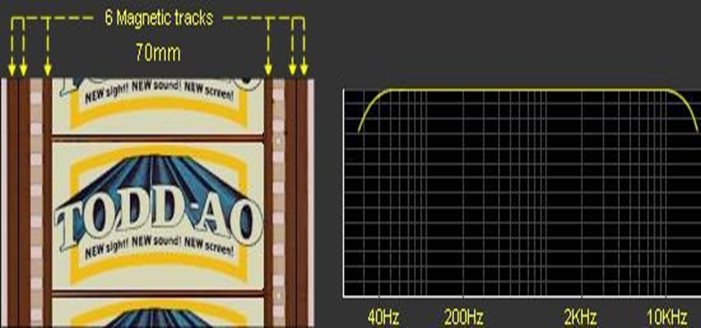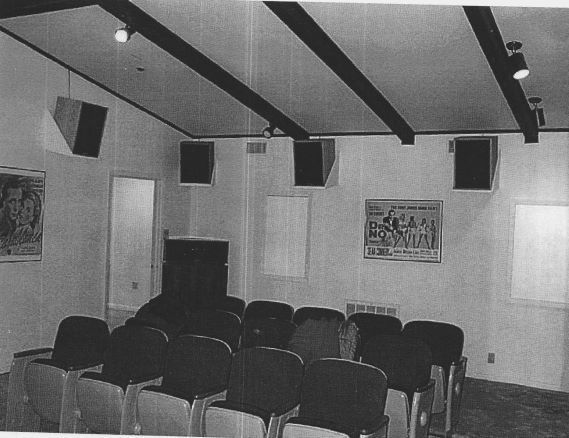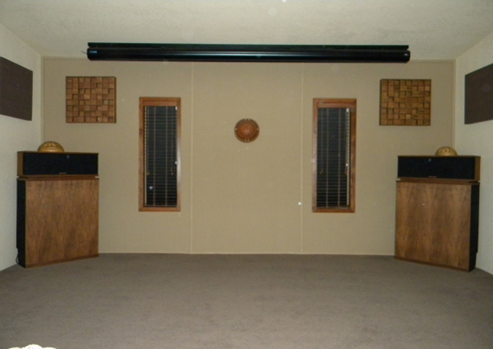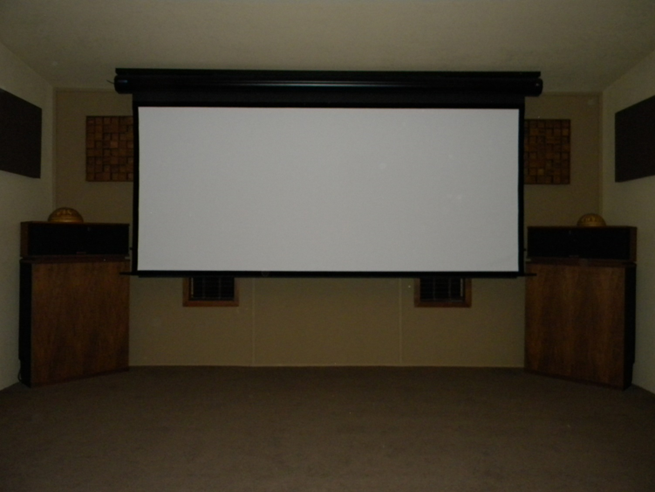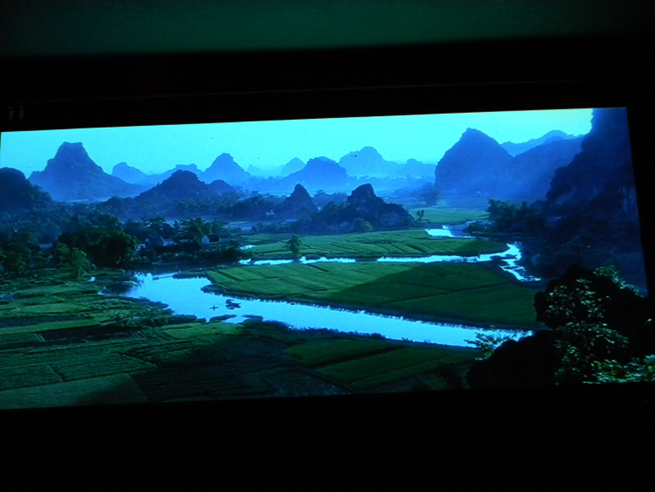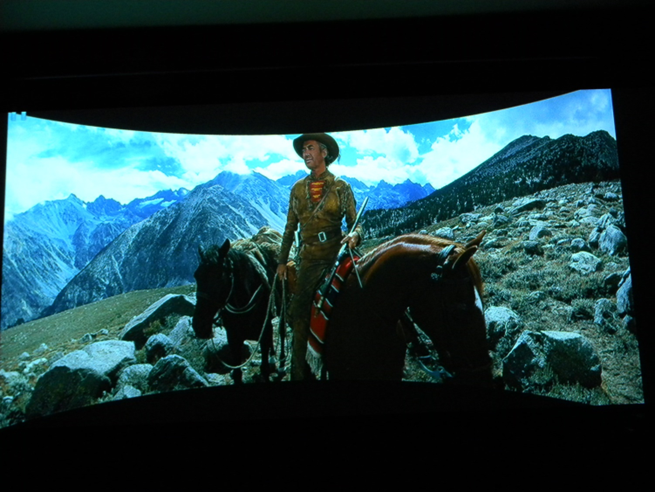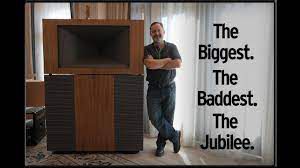-
Posts
4186 -
Joined
-
Last visited
Content Type
Forums
Events
Gallery
Everything posted by garyrc
-
Moving from receiver to integrated with RF7II
garyrc replied to Tobias's topic in 2-Channel Home Audio
You might run into comb filtering with two or more speakers playing exactly the same sound. Or not. The attached article will explain comb filtering. https://www.sweetwater.com/insync/what-is-it-comb-filtering/ Some people seem to get away with it, at least when the doubled speakers are woofers only ... but there are exceptions. Your Denon AVR-A100 has tone controls (they only appear and only work when Dynamic EQ and Dynamic Volume are OFF) ... you could get 6 dB Bass Boost with the Bass tone controls. Playing as loud as you do, Dynamic EQ won't be usable, anyway. Have you tried the separate Bass control? Do you use Audyssey? Have patience with it. You should really get a subwoofer (perhaps instead of getting any more amplification). Almost everyone who uses Audyssey, and plays loudly, turns up both the Bass control and turns up the subwoofer trim in the AVR AFTER running Audyssey (using all 8 microphone positions, but, in your case, out in the room or wherever your party goers will be). See Mike Thomas' https://www.avsforum.com/forum/113-subwoofers-bass-transducers/2958528-guide-subwoofer-calibration-bass-preferences.html GUIDE TO SUBWOOFER CALIBRATION AND BASS PREFERENCES Section II-C: Where And How To Add Bass. This will tell you how to add sub bass without clipping the line driver in the AVR, which may happen without advice like Mike's. Clipping it will sound "hashy," perhaps like "screaming." Once you are there, you may want to read Mikes entire guide. At Main Volume at 0, if you have used Audyssey to make 0 the official reference volume, you should get 105 dB instantaneous peaks, which, unless you have a huge room, will sound even louder, and a bit distorted, due to early reflections and modulation distortion. For home sized rooms, THX recommends a maximum of 100 dB (or 110 dB through a good subwoofer) in any plausible living room, including a home "Great Room." Before putting these levels through a speaker, make sure it is rated for that high a level in dB and that power in watts. A (powered) subwoofer would take some of the burden off of the RF7II by doing some of the heavy lifting. If you cross over at about 60Hz, you will still get tight, clear bass above 60Hz, and "beefy, impactive, slam" below 60 Hz, but you must set your main two channels (LF&RF) to SMALL and 60Hz crossover to the subwoofer to make this work. Best of luck! -
I surely am older than dirt! The best sound my fellow (10th grade) orchestra members and I ever heard, only to be beaten or equaled about 21 years later by a very, very few direct-to-disk/SME/Ortofon (light wt.) combinations, and very, very rarely equaled since by a few Blu-rays or SACDs, was a 22.5 ips. 6 channel, magnetic, recording of a 114 piece orchestra in 1957, that turned those few of us who were not yet audiophiles into them, instantly, Alakazam! As a fairly large group of us were leaving the theater (yes it was a film) we realized we could not walk out on the ultra-dynamic exit music, so we went down near the screen and found that it still sounded great, even through the damn curtains! The vinyl was horrible. We EQd it 6 ways for Sunday, but played it over and over anyway. 45, or so, years later, the DVD was passable with tender, loving EQ. In those days, for 70mm, there were 5 big speaker systems behind the screen, and a 6th channel, with signal tones guiding its surround sound to left, right, rear or all off-screen speakers. The film in question was the original version of Around the World in 80 days, in 70mm Todd-AO, gloriously before the X-Curve, with the sound custom set up in each 70mm theater, the goal being flat from typical seats, beginning to roll off at 12K Hz or so, which was the upper limit of both JBL and Altec theater speakers in those days; the magnetic tracks extended to 15K Hz a la Ampex professional tape machines then, and Ampex was hired to design Todd-AO sound. The original sound elements, in 6 channel, were recorded of full coat 35mm magnetic film (with a 24mm wide magnetic surface (.9449"), providing a wider surface for each track than 1/2 track 1/4" tape, and later transferred to the magnetic tracks on the film shown below. 80 Days played well into its 2nd year in San Francisco. When it finally came out in 35mm mono optical, it was unrecognizable.
-
Too bad they didn't have 4 of these.
-
I didn't see any of the zillion JBL D130s, or any of the rest of the wall.
-
Outdoor concerts may have better imaging. The few times I heard a string quartet outside, or a Sitar and Tabla, this was true. And Rock, well, a different sound, big, filling a literal sound stage. From a distance, as you walked into the park, the sound would change with the wind. Up as close as you dared (still fairly far back) one big curtain of sound, creating its own wind, but with some directionality -- definitely not mono. JBL had an ad about such a setup that was left on, while the band had a break. A passing griffin wandered up on stage, coughed into a microphone, and all that was left was a crater. Indeed most of the custom speakers used by the bands had JBL, sometimes Altec drivers. One experiment used EV T-35 tweeters, like the hand selected T-35s that morphed into K-77s in vintage Klipsch. A friend loaned the Dead some Klipschorns right toward the beginning (maybe they were still the Warlocks then), they liked them, but needing the corner may have stopped them. During the '60s these concerts were free in Golden Gate Park, Provo Park in Berkeley, Lake Merritt in Oakland. The Dead, Country Joe, the Airplane, the whole bunch, sometimes interspersed with chants and poems by the likes of Ginsberg and Ferlinghetti. I remember imaging most of the time. Often there were two huge banks of speakers, one on the Left (naturally), and one on the Right, played in stereo. A few years later The Dead had their wall: There was one glorious time when the mayor closed Haight Street to cars, and the bands set up at the end of the street. The mayor told the police, "No pot busts," and people were dancing in the street, and on the roofs. I didn't notice any imaging that day except strictly in my head, but it was a marvelous display.
-
Did old (1960s) chart recorders use smoothing?
garyrc replied to garyrc's topic in Technical/Restorations
Protesters against the practices of the UC Berkeley administration in 1964/65 wore punch cards dangling on ribbons around their necks with "HUMAN - Do not Fold, Spindle, or Mutilate" written in big letters on them. If any of you old timers saw chart recorder sweeps of, say, Heritage speakers in the Paleolithic, let me ask my question another way, how might a chart recorder frequency sweep of a speaker look compared to a modern REW curve? Might it resemble 1/3 octave, 1/6 octave, or what? Go ahead and guess. -
From close seats (row 10, 9, 8, etc.) with a full sized symphony orchestra, and no audio, there can be "good" imaging. From distant seats, certain instruments (like orchestra bells) are still pretty localizable, but most are not.
-
Thanks so much! See your messages.
-
The first translator didn't work, but it is 4:10 AM here, so I'll wrestle with it later! Thanks again! Zzzzz
-
-
Thanks! Oh! Here it is in an old post by WMcD!! 1987, 5 years later therefore "new." The curves in the 1982 article you found look worthwhile to absorb. so I will. Thanks! See post ahead for complete article.
-
I have one page of a several page review of the Klipschorns, in French. I don't speak French, or read it, but I'm very curious. I can pick out a few words; it does refer to the Khorns as "the new version," but I don't think it is the AK6. My best guess is the AK4 or AK5. I would put it through translation software, but I have only one page of several (with no magazine name or date). Does anyone have that review, or a candidate for it? It would be terrific if someone had it in English! But if in French, I can try a computer translation. It is potentially informative, because between 100 and 200Hz their graph shows a 5 dB peak-trough [i.e., ~~+/- 2.5 dB]. That is one of the best results I've seen for that octave on a Khorn. If it is legit, they must have found just the right place to put it -- in a room, I assume. That is the same octave where Stereophile, on the AK6, found a 12.5 dB peak-trough, albeit raised up on a furniture dolly in a driveway, presumably with no boundary gain and no room gain. [IMO, they should have skipped measurements unless they could put a Khorn in a real room, very near a corner, but toed-in if desired.]
-
Did old (1960s) chart recorders use smoothing? How much? How would we compare the speaker frequency response curves we see in old copies of High Fidelity magazine with modern curves that we run with on something like REW, with 1/3 octave, 1/6 octave smoothing, etc.?
-
La Scalas might be a bit better than the Belles becaise they have a K400 or K401 midrange horns, rather than the smaller ones in the Belles. We replaced the short Belle mid horn with a K401, which required buliding a new, longer, Top Hat. We inclined the top hat down just a bit, so the tweeter is aimed right at the ears of seated people of average height. As you probably know, the newer La Scalas have solider construction, which may have scotched some vibration. Heresies in your big space above the ceiling facing down would be great. Is 1 foot enough for the model of Heresy you're contemplating? I know you are not doing it this way, but here is a photo from Klipsch from long ago. Note the Heresies are supported from the bottom. They could be lethal if they fell, or if they fell apart due to being attached from the back only. I love the idea of placing a Khorn in the rear corner -- now, that's surround sound! There was no Atmos back then, although some theaters did have surround speakers in the ceiling, like the Coronet in San Francisco, which made the big ship that goes over near the beginning of Star Wars quite effective.I like all the speakers to be substantial, and my unscientifically and emotionally derived smallest would be a Heresy. In the old days of cinema, there were some big speakers up high. Here is a big speaker, probably horn loaded, used in 13 theaters (the war expenditures prevented more) for the first movie in stereo and also surround sound, Walt Disney's Fantasia (1940).
-
OR, if you don't have family members who want to listen to music while others run a movie, combine the rooms. We use the Khorns for both music and movies in the same room. The Khorns sound great with both, and the modified Belle Klipsch center channel and Heresy II surrounds, likewise. A peek: The front wall. The wall is covered in fabric, and hides the center channel speaker, which is a modified Belle Klipsch which is flush mounted in a bump-out sticking out of the other side of the wall. Flush mounting gains us 1 to 3 dB in the bass. It is a good timbre match above the 40 Hz Audyssey measurement says is the F3. The Belle is raised so that the tweeter is the same height as those in the Khorns. We put stock upgrades in the Khorns; they have the same guts as ones made in 2018. The fabric on the wall is acoustically transparent, as is the projection screen. With both fabrics in the way, we get about -1.75 dB at 16K. Audyssey compensates for that. The bump-out also contains a subwoofer, and quite a few diffusers. The front wall with the 130" wide "'scope" AT screen down. The screen height is such that someone with tri-focals can see the whole image through the tops of their glasses. Panavision: Cinerama:
-
Question for any K-horn owners about false wall/reflector panel
garyrc replied to formanj's topic in 2-Channel Home Audio
I would think the walls of the artificial corners should be as firm as possible. I've heard of people considering filling them with sand (between the studs), like Wharfedale once did with one of their speaker enclosures. -
Those old Marantz components generally tied McIntosh for the audiophile rank of the best of the best. If you like it loud and clean, get high sensitivity speakers. In a room like ours (4,257 cu. ft.) the 8B's 35 watts per channel ought to get you about 110 dB (113 dB peaks) at a listening position of 13 feet with Klipschorns or Klipsch La Scala (La Scala's bass is attenuated just below 60 Hz, but responds down to about 45 Hz). The best of the best is reputed to be the new Klipsch Jubilee, but, from what you say, you would have to save up quite a while to get them.
-
I have 150 watts per channel (real watts, from separate power amps, not the exaggerated power ratings given to some receivers) into Klipschorns, with a Belle Klipsch center. IMO you should use a good subwoofer with the Khorns set for "small" (as weird as that may seem). I've tried many crossover points, and settled on 60 Hz as the cleanest and most beautiful. Our room is 4,257 cubic feet, and the speakers are 13 feet from the main listening position. To get THX's peak of 105 dB (above the crossover to the sub) at the MLP, we need about 10 watts per channel. To get the THX required 115 dB from the sub, I hope the 650 watt continuous amp in the sub, with dynamic power of 2,400 watts is enough. I think it is, because we haven't blown it in 11 years, and I don't hear it clipping. As a precaution, and for clean response, we set the LPF for LFE at 80 Hz, rather than at the usual 120 Hz. It still shakes the room, couch, desk, etc. Now, if instead of using the THX peak of 105 dB through each Klipschorn (and through the Belle center) we decided we wanted instantaneous peaks at 115 dB, like might be available from a 100 piece orchestra, up close, we would need about 130 watts per channel. Those peaks would have to be truly instantaneous to be safe.
-
I may just sploot, myself.
-
My guess is that a riser that has all 4 of its sides flush with the edges of the La Scala would be O.K., with no true cavties. The height of the risers should be kept to the minimum that fulfills the purpose of the risers. Your 3" height should be O.K., I'd think. The diagrams of reflection of the Klipschorn on the floor seem to imply that it needs to have the boundary gain of floor reflections (but they are not desirable in the midrange and treble, thus Heyser's recommendation of a thick rug and rug pad). Obviously, we wouldn't expect a riser 8 feet tall to be good (with a ceiling far, far away), because the floor would be too far away to reinforce bass. So, within limits.
-
It's me! The size of the beard varies with mood. Is yours gray? I've had mine since 1965.
-
Don't stack them with the bottom of one resting on the top of the other. They need heat dissipation and good air currents circulating. If they have rack mount kits, mount them with a gap of several inches between the top of one and the bottom of the other. If they don't have rack mount hardware, put them on shelves several inches apart. From the manual: "All PS Audio components require adequate ventilation at all times during operation. Rack mounting is acceptable where appropriate." It is true that some people get away with direct stacking, but, IMO they are taking a risk. Maybe they have been bamboozled by advertising photos from the PR department. If you play music through most of the day like I do, all components will get warm, possibly very warm [you could fry an egg on some tube equipment]. My guess -- and it is just a guess -- is that the CD player will emit less heat, so could be put on the bottom.
-
Me too!
-
... that got me wondering about the caps in my Khorns AK4 (from the Klipsch upgrade kit) ... I think I was told they would last a very long time .. does anybody know what kind they are and their approximate life?




